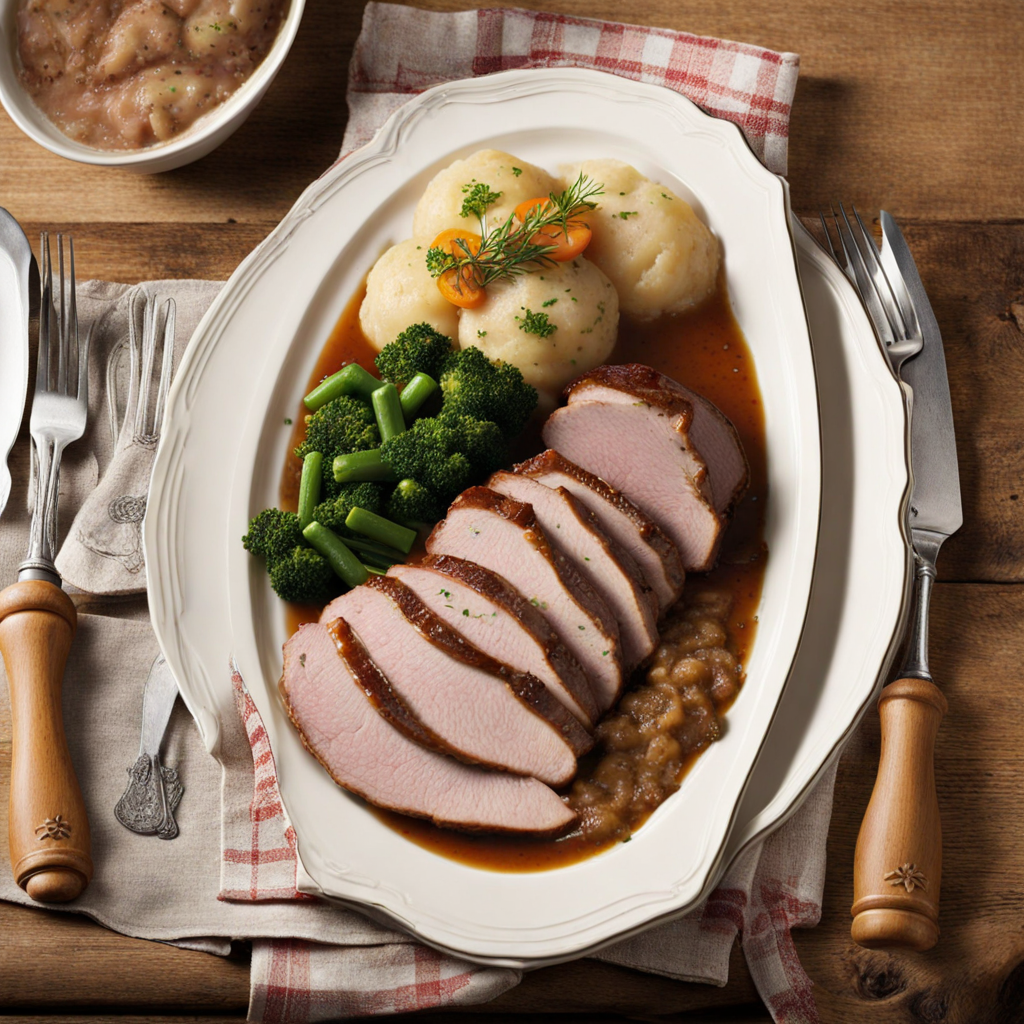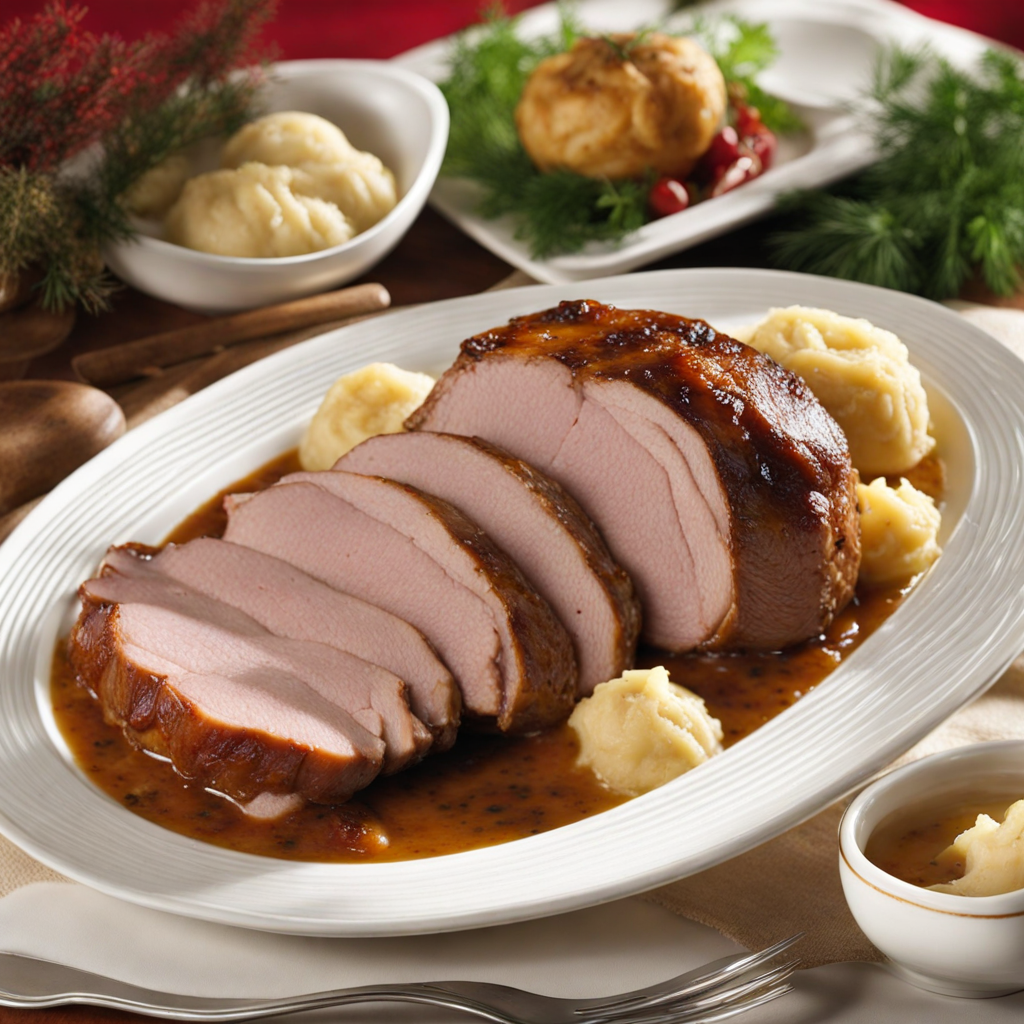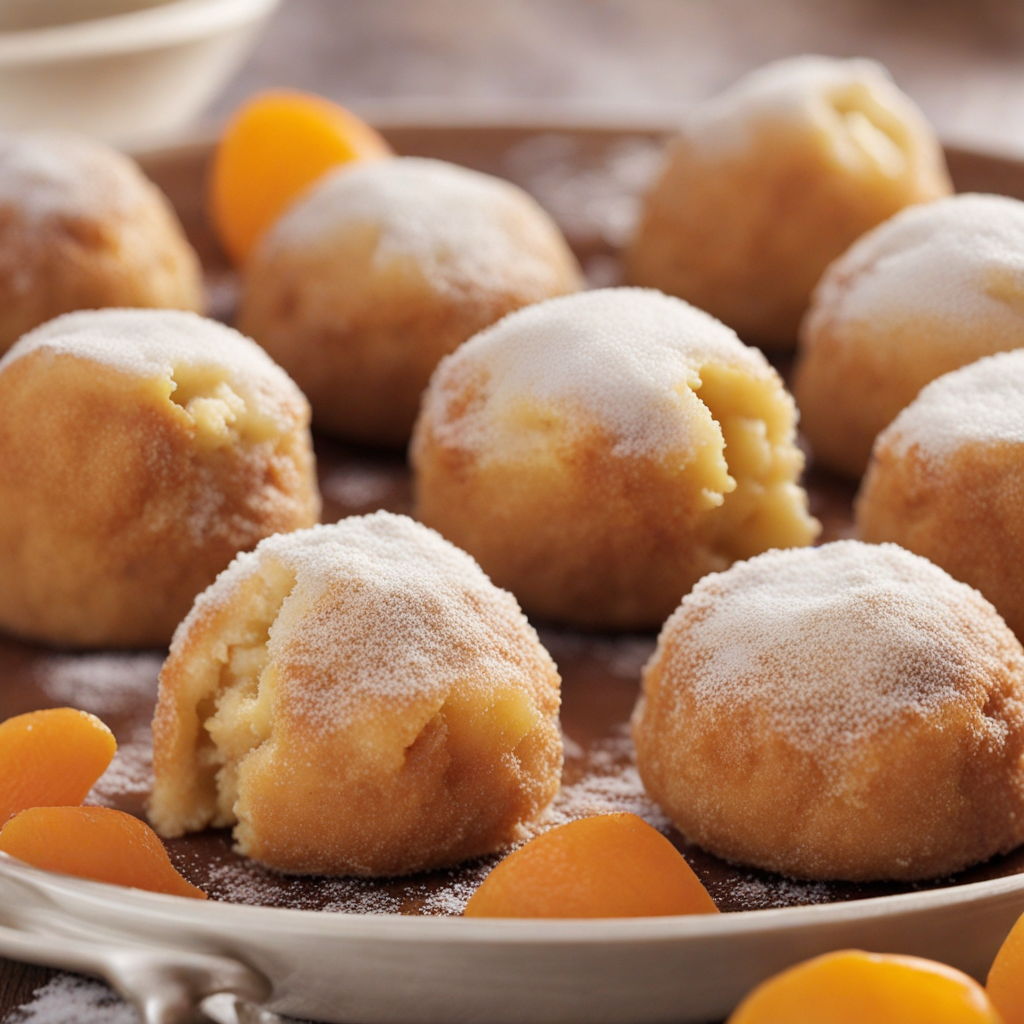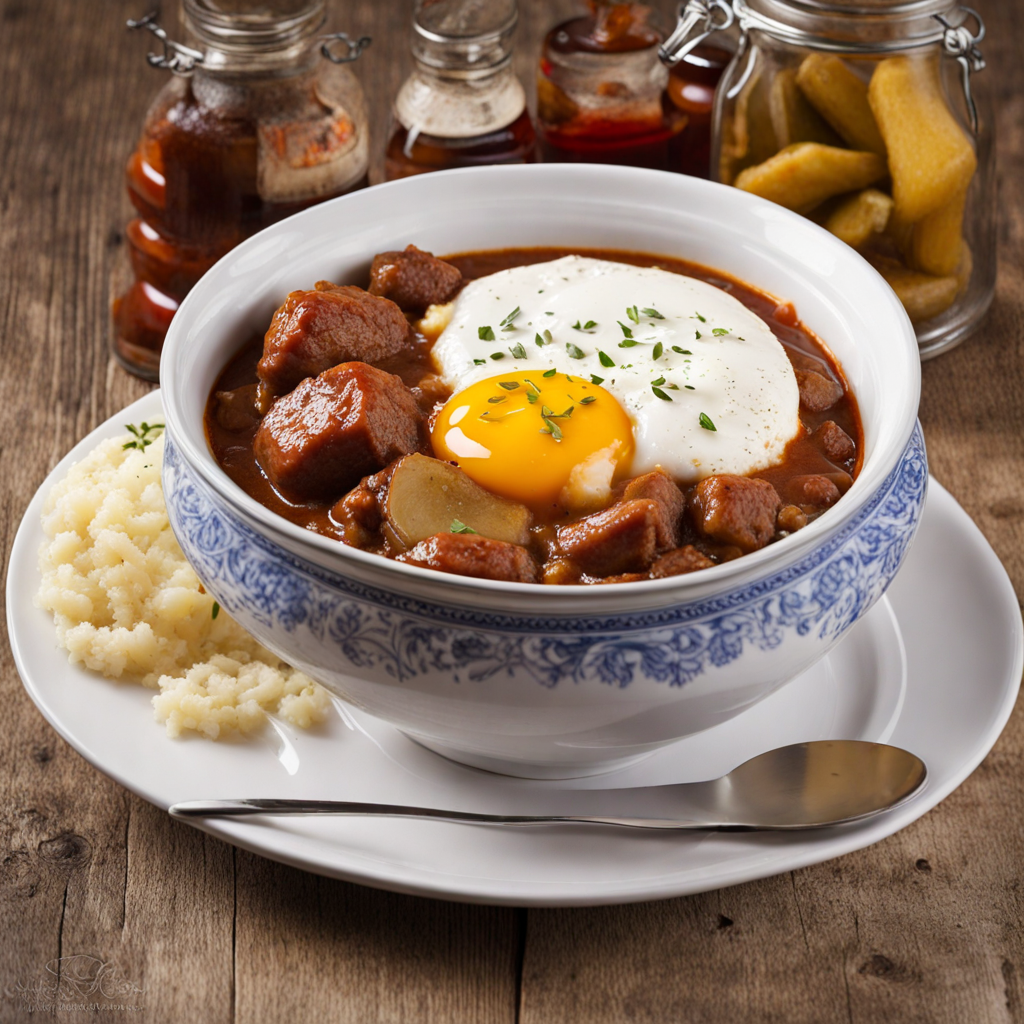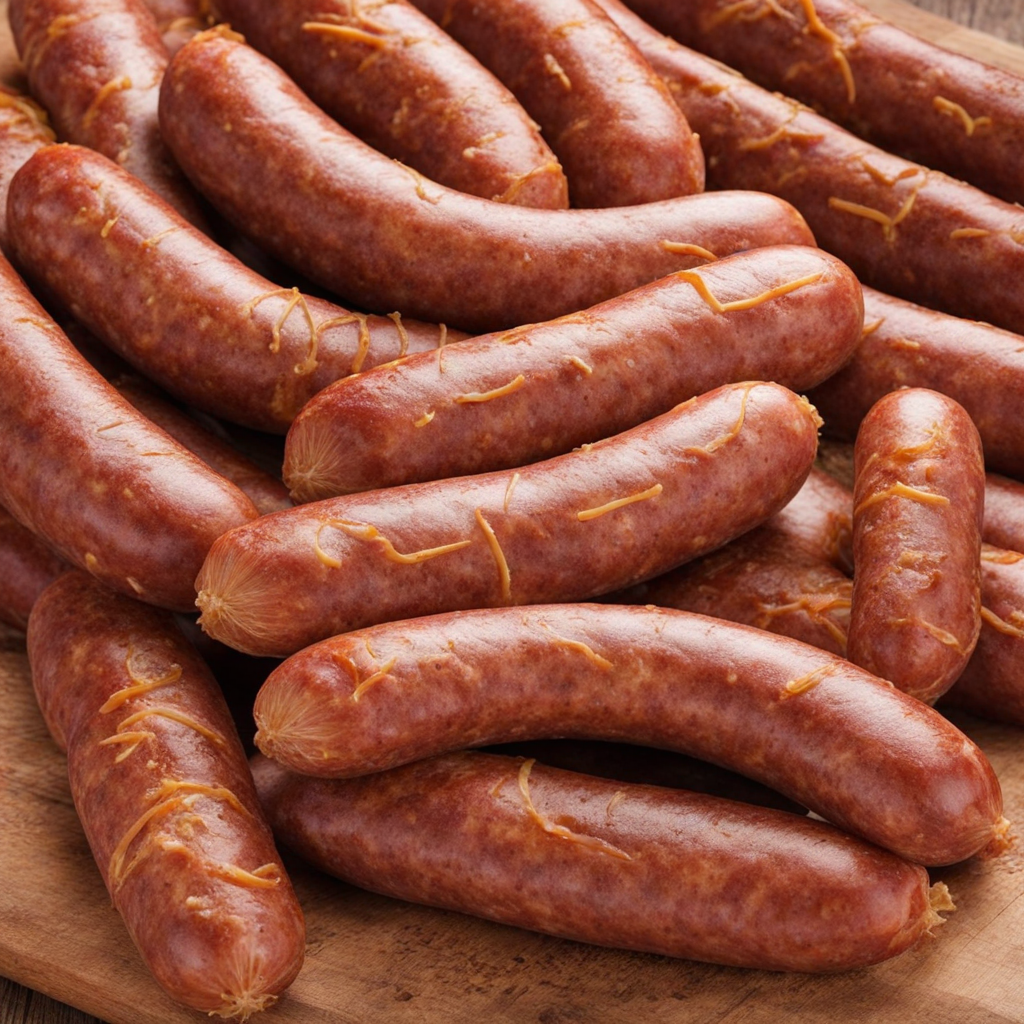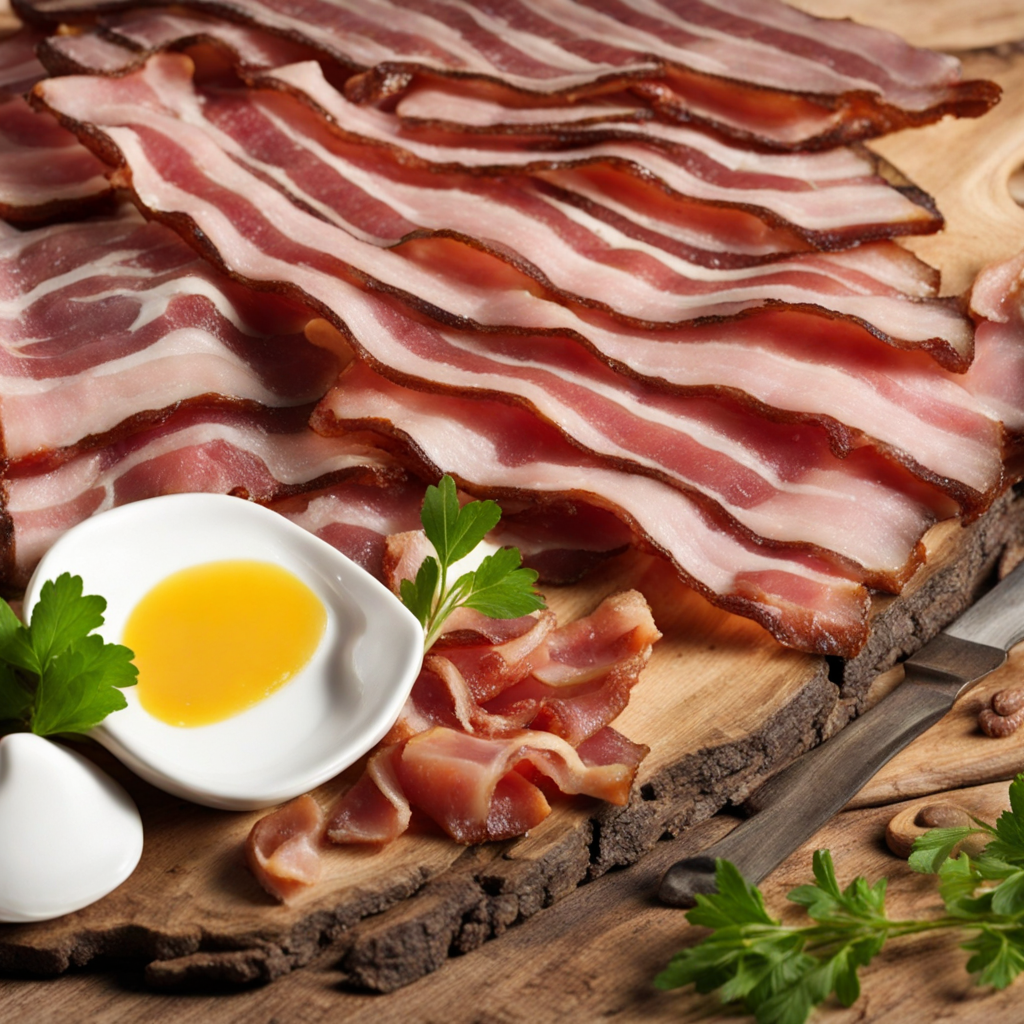Schweinsbraten
Schweinsbraten, a traditional Austrian dish, is a celebration of hearty flavors and rich culinary heritage. At its core, Schweinsbraten consists of succulent roasted pork, typically the shoulder or belly, which is seasoned with a blend of spices, including caraway seeds, garlic, and salt. The preparation often involves marinating the meat overnight, allowing the spices to deeply infuse the pork with flavor. The roasting process is key to achieving the perfect balance of crispy skin and tender, juicy meat, as it is usually cooked slowly in an oven until the skin crackles and turns a beautiful golden brown, creating an irresistible texture that contrasts with the moist, savory interior. This dish is often served with a variety of traditional accompaniments that enhance its flavors. A classic pairing includes dumplings, known as Knödel, which are perfect for soaking up the rich gravy that accompanies the Schweinsbraten. Additionally, sauerkraut or red cabbage adds a refreshing tanginess that balances the richness of the pork. The combination of these elements not only creates a delightful harmony of tastes but also embodies the rustic essence of Austrian cuisine, making each bite a comforting experience. When enjoying Schweinsbraten, one is not just savoring a delicious meal but also participating in a cultural tradition that has been passed down through generations. It's a dish often served during festive occasions and family gatherings, representing togetherness and joy. The aroma of roasting pork fills the air, inviting everyone to the table, where stories are shared and laughter echoes. For those seeking to explore new culinary territories, indulging in Schweinsbraten offers a unique glimpse into the heart of Austria’s gastronomic landscape, promising a memorable adventure for the palate.
How It Became This Dish
The History of Schweinsbraten: Austria's Iconic Pork Roast #### Origins Schweinsbraten, the beloved Austrian pork roast, has roots deeply embedded in the heart of Central European culinary traditions. The term "Schweinsbraten" itself translates to "pig roast" in English, deriving from the German words "Schwein" (pig) and "braten" (to roast). This dish is especially associated with the regions of Austria and Bavaria, where pork has historically been a staple of the diet. The origins of Schweinsbraten can be traced back to the agricultural practices of medieval Europe, where pig farming was prevalent due to the animal's ability to thrive on scraps and forage. This made pigs a valuable resource for rural households, providing not only meat but also lard, which was essential for cooking and preserving food. The tradition of roasting pork likely emerged as a way to celebrate feasts and communal gatherings, a practice that continues today in Austrian culture. #### Cultural Significance Schweinsbraten is much more than just a dish; it embodies a sense of identity and tradition within Austrian culture. It is often served during festive occasions, family gatherings, and major holidays, including Christmas and Easter. The roast symbolizes hospitality and generosity, often shared among family and friends during large gatherings. In Austria, meals are typically communal experiences, and Schweinsbraten is no exception. The dish is often accompanied by traditional sides such as dumplings (Knödel), sauerkraut, and rich gravies, creating a hearty meal that reflects the country’s agricultural roots. The preparation and consumption of Schweinsbraten also highlight the importance of local ingredients and sustainability, as many cooks source their pork from nearby farms. The dish carries regional variations across Austria, influenced by local customs and ingredients. In Vienna, Schweinsbraten might be served with a different style of dumplings compared to the Tyrolean version, where it could be paired with potato salad or bread. This regional diversity adds to the cultural tapestry that Schweinsbraten represents. #### Development Over Time The evolution of Schweinsbraten mirrors the broader culinary developments and socio-economic changes in Austria. In the 19th century, with the rise of the middle class and increased industrialization, the availability of pork and other ingredients became more widespread. As a result, Schweinsbraten transitioned from a dish primarily reserved for special occasions to a more common feature in everyday meals. The introduction of new cooking methods and tools, such as cast iron roasting pans and ovens, enhanced the preparation of Schweinsbraten. These innovations allowed for more consistent cooking and enabled home cooks to experiment with flavors and techniques. The classical preparation of Schweinsbraten involves marinating the pork with a mix of garlic, caraway seeds, salt, and pepper, and then slow-roasting it to achieve a tender, flavorful result with a crispy skin. This technique has been refined over generations, with families often passing down their own secret recipes. In the mid-20th century, as travel became more accessible, Austrian cuisine began to gain international recognition. Restaurants began to feature Schweinsbraten on their menus as a representation of authentic Austrian fare. The rise of tourism in Austria further solidified Schweinsbraten’s status as a culinary icon. Tourists flocked to try this quintessential dish, and its popularity extended beyond the borders of Austria, influencing perceptions of Austrian cuisine worldwide. In contemporary times, Schweinsbraten continues to evolve. Modern chefs are experimenting with the dish, infusing it with innovative flavors, and incorporating international influences. While traditionalists maintain the classic techniques, others are exploring new marinades, cooking methods, and side dishes. The dish remains a staple at celebrations, but it is also finding its way into gastronomy-focused restaurants, where chefs highlight the importance of local sourcing and seasonal ingredients. #### Schweinsbraten in Modern Culture Today, Schweinsbraten is not just a dish; it is a cultural symbol of Austria. It features prominently in cookbooks, culinary festivals, and regional competitions. One notable event is the "Schweinsbraten Championship," held annually in various Austrian regions, where local chefs compete to create the best Schweinsbraten. This event showcases the pride and craftsmanship associated with the dish, reinforcing its status as a culinary treasure. Social media has also played a role in revitalizing interest in traditional dishes like Schweinsbraten. Food bloggers and influencers share their experiences and recipes, reaching a global audience. This has led to a renewed appreciation for Austrian cuisine and its hearty, comforting fare. The imagery of a beautifully roasted Schweinsbraten, glistening with a golden crust, garnished with fresh herbs, is irresistible and has captured the attention of food enthusiasts around the world. #### Conclusion Schweinsbraten stands as a testament to Austria's rich culinary heritage, reflecting the country's agricultural roots, communal values, and evolving tastes. From its humble beginnings as a peasant dish to its status as a national treasure, Schweinsbraten is more than just pork; it is a symbol of tradition, hospitality, and the enduring connection between food and culture. As it continues to adapt and thrive in a modern context, Schweinsbraten remains a cherished dish that brings people together, celebrating the joy of shared meals and the warmth of home. Whether enjoyed in a rustic tavern or a contemporary restaurant, Schweinsbraten will always hold a special place in the hearts (and stomachs) of those who seek comfort in its flavors.
You may like
Discover local flavors from Austria


